Related Research Articles
Miss Jane Marple is a fictional character in Agatha Christie's crime novels and short stories. Miss Marple lives in the village of St. Mary Mead and acts as an amateur consulting detective. Often characterized as an elderly spinster, she is one of Christie's best-known characters and has been portrayed numerous times on screen. Her first appearance was in a short story published in The Royal Magazine in December 1927, "The Tuesday Night Club", which later became the first chapter of The Thirteen Problems (1932). Her first appearance in a full-length novel was in The Murder at the Vicarage in 1930, and her last appearance was in Sleeping Murder in 1976.
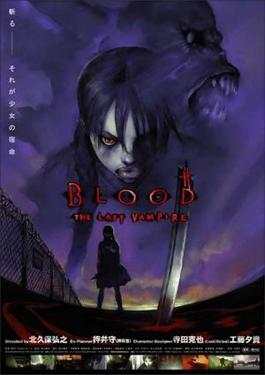
Blood: The Last Vampire is a 2000 Japanese animated action horror film directed by Hiroyuki Kitakubo, written by Kenji Kamiyama and produced by Production I.G. The film premiered in theaters in Japan on November 18, 2000.

Marie Adelaide Elizabeth Rayner Lowndes, who wrote as Marie Belloc Lowndes, was a prolific English novelist, and sister of author Hilaire Belloc.
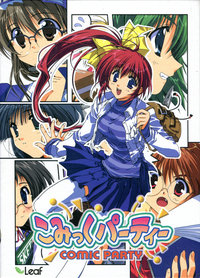
Comic Party, sometimes abbreviated to ComiPa, is a dating sim video game by the Japanese game studio Leaf. It was first released on May 28, 1999, for Windows with adult content, but re-released with it removed for the Dreamcast, Windows, and PSP. The main focus of the game is the creation of various dōjinshi by the player's character, during which there are varied opportunities to interact with a cast of girls.

"The Adventure of the Speckled Band" is one of 56 short Sherlock Holmes stories written by Sir Arthur Conan Doyle, the eighth story of twelve in the collection The Adventures of Sherlock Holmes. It was originally published in Strand Magazine in February 1892.
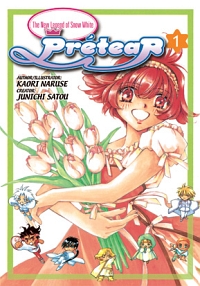
Prétear, also called Prétear - The New Legend of Snow White, is a manga series written by Junichi Sato and illustrated by Kaori Naruse. Spanning four volumes, the manga series was originally published in Japan by Kadokawa Shoten from May 2000 through July 2001. It was published in English in North America by ADV Manga.
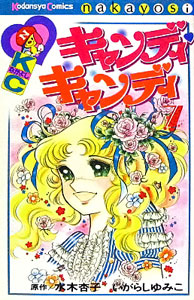
Candy Candy is a Japanese series created by Japanese writer Keiko Nagita under the pen name Kyoko Mizuki. The main character, Candice "Candy" White Ardley, is a blonde girl with freckles, large emerald green eyes and long hair, worn in pigtails with bows. Candy Candy first appeared as a manga in April 1975, written by Mizuki and illustrated by manga artist Yumiko Igarashi, a collaboration which was put together by the Japanese magazine Nakayoshi who were interested in recreating a "masterpiece" manga in the same vein as Heidi, Anne of Green Gables and other famous classic titles of literature read predominantly by young girls. The manga series ran for four years and won the 1st Kodansha Manga Award for shōjo in 1977. The story was adapted into an anime series by Toei Animation. There are also three animated short films.

"The Little Match Girl" is a literary fairy tale by Danish poet and author Hans Christian Andersen. The story, about a dying child's dreams and hope, was first published in 1845. It has been adapted to various media, including animated, live-action, and VR films as well as television musicals and opera.

Dr. Jekyll and Mr. Hyde is a 1941 American horror film starring Spencer Tracy, Ingrid Bergman, and Lana Turner. The production also features Donald Crisp, Ian Hunter, Barton MacLane, C. Aubrey Smith, and Sara Allgood. Its storyline is based on the 1886 Gothic novella Strange Case of Dr Jekyll and Mr Hyde written by Scottish author Robert Louis Stevenson. There have been many filmed adaptations of the novella. This movie was a remake of the Oscar-winning 1931 version starring Fredric March.
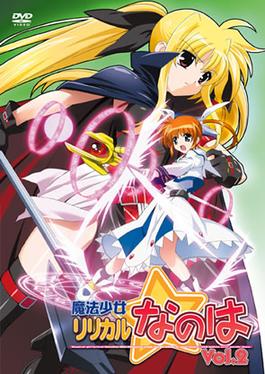
Magical Girl Lyrical Nanoha is a Japanese anime television series directed by Akiyuki Shinbo, with screenplay written by Masaki Tsuzuki and produced by Seven Arcs. It forms part of the Magical Girl Lyrical Nanoha series. The Japanese Association of Independent Television Stations broadcast 13 episodes between October and December 2004. The series is a spin-off of the Triangle Heart series and its story follows a girl named Nanoha Takamachi who decides to help a young mage named Yūno to recover a set of 21 artifacts named the "Jewel Seeds".
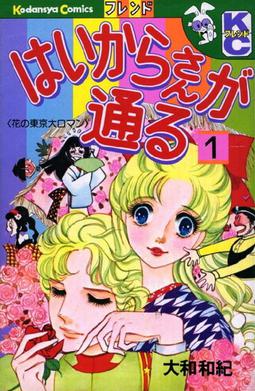
Haikara-San: Here Comes Miss Modern, also known as Smart-san or Mademoiselle Anne, is a Japanese manga series written and illustrated by Waki Yamato. It was serialized by Kodansha in the magazine Shōjo Friend from 1975 to 1977. The title can be literally translated into English as Here Comes Miss Modern, Here Comes Miss High-Collar, or Fashionable Girl Passing By. In 1977, it was awarded the 1st Kodansha Manga Award for shōjo manga.

Skip Beat!, abbreviated as Sukibi, is a Japanese shōjo manga by Yoshiki Nakamura. It is the story of Kyoko Mogami, a 16-year-old girl who discovers that her childhood friend and romantic goal, Shotaro Fuwa, only keeps her around to act as a maid and to earn his living expenses, while he works his way to become the top pop idol in Japan. Furious and heartbroken, she vows revenge by beating him in show business.

White Album is a Japanese adult visual novel developed by Leaf, and was originally released on May 1, 1998 for Microsoft Windows as a CD-ROM. A PlayStation 3 version published by Aquaplus with several modification was released in 2010 and ported to PC in 2012. A sequel to the original visual novel, titled White Album 2, was released in two parts in 2010 and 2011. The gameplay in White Album follows a linear plot line, which offers pre-determined scenarios and courses of interaction, and focuses on the appeal of the female main characters.

O. Henry's Full House is a 1952 American anthology film made by 20th Century Fox, consisting of five films, each based on a story by O. Henry.

The Girl Who Leapt Through Time is a science fiction novel by Yasutaka Tsutsui. Originally serialized from 1965 to 1966, it tells the story of a high-school girl who accidentally acquires the ability to time travel, which leads to a time loop where she repeatedly relives the same day.
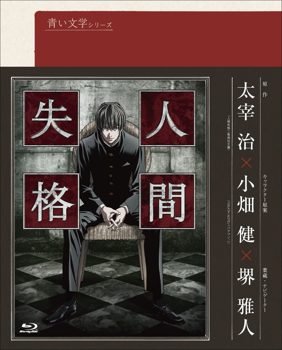
Aoi Bungaku Series is a twelve episode Japanese anime series featuring adaptations inspired by six short stories from Japanese literature. The six stories are adapted from classic Japanese tales. Happinet, Hakuhodo DY Media Partners, McRAY, MTI, Threelight Holdings, Movic, and Visionare were involved in the production of the series. Character designs were provided by manga artists Takeshi Obata, Tite Kubo and Takeshi Konomi (#9–10). The stories adapted here may stray away significantly from the original plot of the classics, even if they try to capture the essence of the stories. There are some titbits told by the host Sakai Masato about the background of the story before the animation starts.
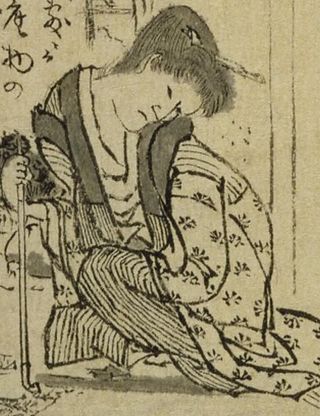
Katsushika Ōi, also known as Ei (栄) or Ei-jo, was a Japanese Ukiyo-e artist of the early 19th century Edo period. She was a daughter of Hokusai from his second wife. Ōi was an accomplished painter who also worked as a production assistant to her father.

Miss Hokusai is a Japanese historical manga series written and illustrated by Hinako Sugiura, telling the story of Katsushika Ōi who worked in the shadow of her father Hokusai. It was adapted into an anime film directed by Keiichi Hara, that was released in 2015.

Three Leaves, Three Colors is a Japanese four-panel manga series by Cherry Arai, serialized in Houbunsha's Manga Time Kirara magazine since February 2003 and fourteen tankōbon volumes have been collected so far. An anime adaptation by Doga Kobo aired from April to June 2016.
References
- ↑ "O. Henry's Full House". AFI Catalog of Feature Films . American Film Institute . Retrieved July 15, 2021.
- ↑ "The Last Leaf". The FictionMags Index. Retrieved July 15, 2021.
- ↑ "A Summary and Analysis of O. Henry's 'The Last Leaf'". Interesting Literature. 2022-01-24. Retrieved 2022-05-01.
- ↑ Hischak, Thomas S. (2012). American Literature on Stage and Screen: 525 Works and Their Adaptations. McFarland. pp. 113–114. ISBN 978-0-7864-9279-4.
- ↑ "The Last Leaf". Stories of the Films. Moving Picture World. 34 (11): 1675. December 15, 1917. Retrieved 2015-10-01– via Internet Archive.
- ↑ "O. Henry's Full House". Catalog of Feature Films. American Film Institute. Retrieved 2015-10-01.
- ↑ "Easter TV Special To Affirm LDS Belief in Resurrected Christ". News of the Church. Ensign . April 1984. Retrieved 2015-10-01.
- ↑ "5 films that take their cue from short stories". IBNLive.com. CNN-IBN. July 9, 2013. Archived from the original on July 12, 2013.